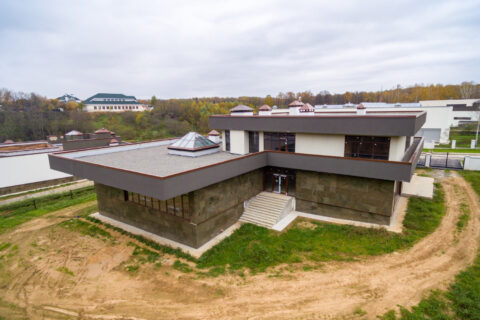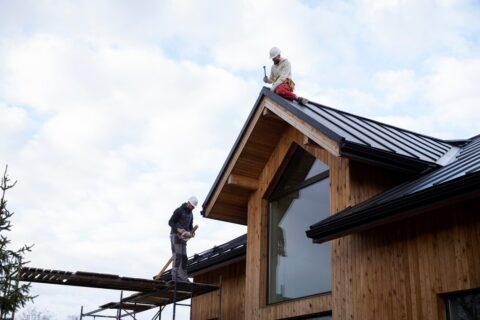Why Ice Dams Form and How to Prevent Them
Winter in Ottawa can be beautiful, but it also brings challenges, especially for your roof. Ice dams are a common problem many homeowners face during the coldest months. They form when snow melts on your roof and freezes at the edges, creating a barrier that traps more water. This can lead to leaks and damage inside your home.
Understanding how ice dams form and why they’re troublesome is the first step in tackling this winter issue. Ice dams can cause serious harm to your roof and home, which is why prevention is key. Simple measures, like keeping your gutters clean and ensuring your attic is properly insulated, can make a big difference.
But what if you already have ice dams? Don’t worry! There are immediate actions you can take to minimize damage and stop leaks. By learning how to handle ice dams, you can protect your home and enjoy the winter months with peace of mind. Let’s take a closer look at this frosty problem and explore how to keep your roof safe.
Understanding Ice Dams: What They Are and Why They Form
Ice dams are tricky winter problems that form on roofs when snow melts, then refreezes at the roof’s edge. They often happen when a home’s attic is warmer than the roof, causing the snow to melt from the bottom up. Once the water hits the colder edge of the roof, it refreezes, creating a “dam” of ice.
This process occurs in Ottawa and other cold regions where temperatures fluctuate. Warm air from inside the house leaks into the attic, raising the temperature. This heat can be enough to melt the snow on the roof even when outside temperatures remain below freezing. As more snow melts, water continues to flow down the roof, only to be blocked by the growing ice dam.
Several factors contribute to ice dam formation:
- Poor insulation and ventilation: If your attic lacks proper insulation, it struggles to maintain a uniform temperature, causing uneven heating of the roof.
- Leaky ducts or exhaust fans: When warm air escapes through small gaps around ducts or exhaust fans, it can warm the roof and contribute to melting snow.
- Complex roof designs: Valleys, dormers, and other complex roof designs are more prone to ice dams as they can trap snow and ice.
Understanding why ice dams form is crucial for preventing them. By identifying the common causes, you can take proactive steps to protect your roof and home from potential damage.
The Impact of Ice Dams on Your Home
Ice dams can cause serious damage, affecting both the roof and the inside of your home. One of the biggest problems they create is water leaks. When water backs up behind the ice dam, it can seep under roofing materials and into your house, damaging insulation, walls, and ceilings.
Other impacts of ice dams include:
- Shingle damage: The extra pressure from water and ice can damage or lift shingles, leaving your roof exposed to further water entry.
- Gutter damage: Ice dams are heavy, and the added weight can easily damage or tear away gutters, affecting your home’s drainage system.
- Increased energy costs: When water seeps into your home, it can wet insulation, reduce its effectiveness, and lead to higher heating costs.
- Mould growth: Moisture entering your home encourages mould and mildew growth, which can cause health problems for you and your family.
Repairing the damage caused by ice dams can be costly and time-consuming. Fixing water damage often requires repairing walls and ceilings and addressing mould issues. Shingle and gutter repairs might also be needed to restore the roof’s integrity.
By understanding the potential impacts of ice dams, you’re better equipped to take preventative measures. Avoiding these issues saves you from expensive repairs, keeping your home safe and comfortable through the winter months.
Practical Steps to Prevent Ice Dams
Preventing ice dams on your roof requires diligence and some basic home maintenance. Taking action early can keep your home safe from winter’s harsh impacts.
1. Insulate Properly: Ensure your attic has adequate insulation. This prevents warm air from escaping into the attic and melting snow on the roof, which causes ice dams. Adding or upgrading insulation is a smart way to maintain the right attic temperature.
2. Improve Ventilation: Make sure your attic has good ventilation. Vents at the ridge and eaves allow cold air to flow through, keeping the attic and roof cold. This reduces the chances of snow melting unevenly and forming ice dams.
3. Seal Gaps: Check your home for any air leaks that could let warm air into the attic. Sealing gaps around light fixtures, vent pipes, and chimneys help maintain a consistent roof temperature.
4. Install Heated Cables: Consider using heated cables along the eaves of your roof. These cables help snow melt off your roof evenly, preventing the refreezing that leads to ice dams.
5. Keep Roof Clean: After heavy snowfalls, use a roof rake to clear snow from the edges of your roof. This reduces buildup and helps prevent ice dam formation during winter.
By following these practical steps, you can protect your home from the damage ice dams can cause. Consistent maintenance and vigilance are key to keeping your roof in great shape all winter long.
Immediate Actions to Take If You Have Ice Dams
If ice dams form despite your efforts, acting quickly can prevent serious damage to your home. Here are some steps you can take right away.
1. Remove Snow: Gently remove snow from your roof using a roof rake. This prevents further melting and stops ice dams from growing larger.
2. Melt the Ice: Use calcium chloride to melt ice dams. Place the calcium chloride in a mesh bag and position it vertically on the dam. It will slowly melt the ice, allowing the water to flow off your roof.
3. Create Drainage Channels: Cut small channels in the ice dam to allow trapped water to escape. This must be done with care to avoid any damage to the roof or shingles.
4. Protect Your Interior: Move any furniture or valuables away from areas where water might leak. Use buckets to catch water and reduce interior damage until the ice dam is removed.
5. Consult Professionals: If the ice dam is large or causing significant damage, contact a professional for safe removal. They have the tools and expertise to handle these problems without harming your roof.
Taking these immediate actions when you discover ice dams can minimize damage and protect your home. Remember, addressing the problem quickly is crucial to keeping your home safe.
Conclusion
Understanding and addressing common winter roof problems can help protect your home in Ottawa from unnecessary damage. From preventing roof leaks to managing ice dams, each step contributes to a secure and sound roof. Staying proactive with airflow, insulation, and regular maintenance makes a big difference, ensuring your home stays warm and dry. It’s important to be vigilant and handle potential issues before they escalate into costly repairs.
When facing winter challenges, knowing who to call is important. Magnum Roofing offers reliable solutions tailored to your home’s needs. Whether it’s fixing wind damage, addressing ice dams, or checking your gutters, trust our roofers in Ottawa to keep your roof in top shape. With years of experience, we ensure your roof withstands Ottawa’s harsh winters. Contact us today to learn more about how we can help protect your home year-round.


